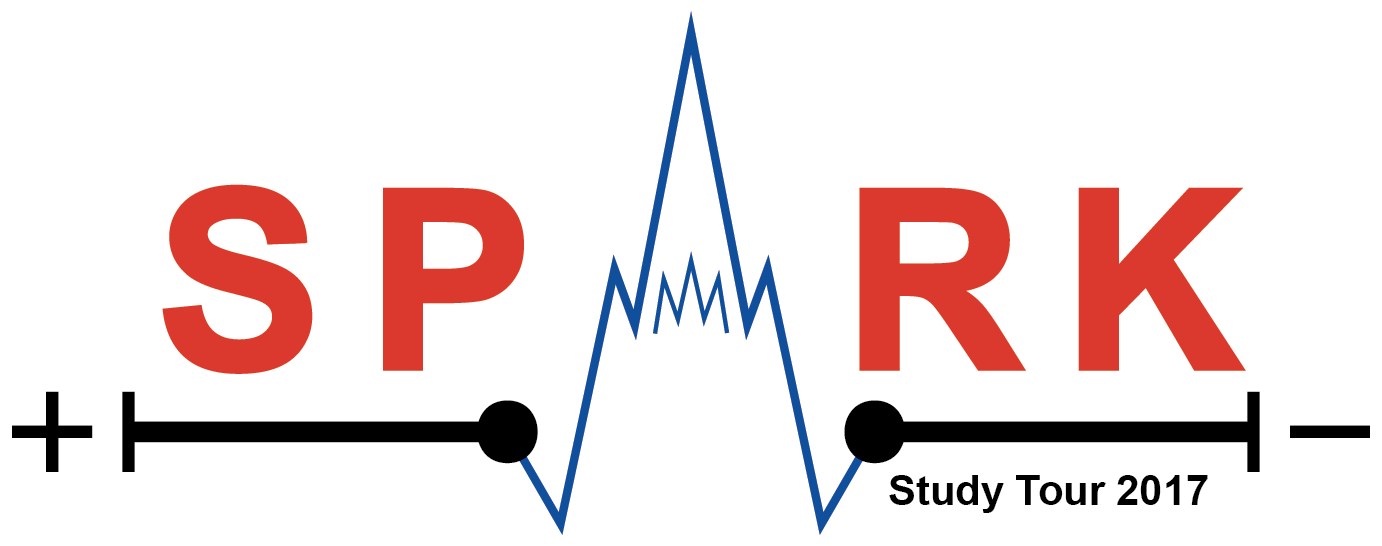Today we had one of the coolest excursions of our trip: An excursion to the Jeju thermal power plant. This relatively small power plant is operated by Komipo (Korea Midland Power Company) and is one of two power plants on Jeju island. The power plant houses several units: Two 40MW internal combustion units, a 55MW gas turbine, two 75MW oil units and some smaller PV systems. We visited the 75MW oil plants, one of which was running on conventional fuel oil and the other running on bio-oil.
Due to limited excursion capacity, the group only consisted of 14 people. We were picked up from our hostel by a small bus and an SUV, and we were greeted by the Komipo tour guides. After a short drive we arrived at the facility’s main reception area where we got a short presentation about Komipo and the Jeju power plant. Komipo is one of the major electricity suppliers in Korea and with an installed capacity of over 12GW it is responsible for 10% of the country’s generated power. Komipo is a public company that operates the Jeju power plant as a public service. This is because the price of electricity generated at the Jeju plant is not competitive in a liberalized market, due to the small scale of the power plant. The power plant is still under development as a new combined cycle power plant (a gas turbine which doubles as a conventional gas plant) is being installed on the site, which will have a capacity of 240MW. After the presentation, there was a brief question round. Among other things, it was explained that the gas turbines would be fed by natural gas from a LNG (liquid natural gas) terminal on the east side of Jeju and that the HVDC link installed on the same site, which connects the island of Jeju to the Korean mainland, provided an additional 30% of Jeju’s power. The total power supply is therefore split evenly between the two power plants on Jeju and the HVDC link.
After this we set off to the actual generator units 2 and 3. The bus drove around the entire power station, where we could see various installations such as the huge water and oil tanks, the docks where oil supply ships docked 2 times a week, and various components of the new CCPP scattered around the area. The plant was nicely segmented between the various power generator units and HVDC link. It contained a total of two high voltage transformers for redundancy. Once we arrived at the plant we were immediately sent to the control room on floor 3. Incidentally this was also the floor that housed the two 79MVA 3-stage generators, which we could take a brief look at. The operator explained a bit about the control room of the units, which were operating near maximum power. We learned that the summer power consumption peak (warm, humid days like today) is about 90% of the winter power consumption peak. This is due to the abundance of air conditioning in all buildings on Jeju and Korea in general. Apart from this it was explained that the two oil-powered units can be considered base-line power supply for Jeju, and that they had a power factor of 0.99. Though it was not thoroughly explained, it can be assumed that most power factor correcting will be done with the HVDC link.
The operator told us that typhoons, like the one that might hit over the weekend, are of no concern to the power plant. Everything is built to easily withstand typhoons, since the units opened in 2001 there has been no interruption of service due to typhoons. To meet the green image of Jeju, a lot of exhaust fume filtering is applied. Taking this even further, Komipo has set a goal to not exceed half of the allowed exhaust limit.
Afterwards we went up to the 8th floor, the roof of the power plant, to get a nice overview of the whole facility. From here we had a good view or the entire CCPP construction site, of which the heat exchangers were already in place. It was also nice to get an overview of Jeju City Hall, the area where we stayed. Due to the hot day and the proximity to the power plants thermal exhaust, temperatures on the rooftop were almost unbearably high. After a short talk with the operator and tour guide and a group picture on the rooftop we headed back down to the ground floor to get back in the bus to the hostel. Komipo provided us with a very nice present: An American-style Jeju coffee container. All in all this was a great excursion, and I would like to thank Komipo again for being a great host for us!
-Stefan Molenschot

